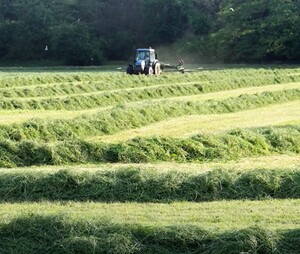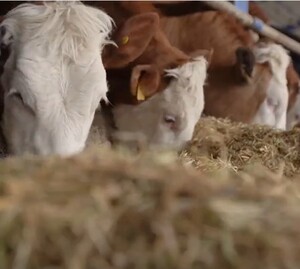
Improved forages empower smallholder women livestock keepers in Kenya and Ethiopia
Climate change is a global challenge that burdens all humanity, but not equally. The rural poor, particularly women, are more affected by climate-related shocks. Women and men in rural areas of sub-Saharan Africa who depend on farming as a primary source of livelihood are considered more vulnerable. Climate shocks such as floods and drought are the main stressors affecting livestock and crop productivity in this region. These shocks affect livestock production by destroying pasture, resulting in competition and reduced access to the high-quality and sufficient livestock feeds.
A recent study by the International Livestock Research Institute (ILRI) gender team and Send a Cow in Kenya and Ethiopia shows that combining the introduction of improved forage technology with gender sensitivity training led to the production of high-quality forages for animals, improved livestock raising, availability of milk in the household, increased income through the sale of surplus milk and forages, and increased opportunities for decision-making by women in households.
Research was done in parts of western Kenya and southern Ethiopia where improved Brachiaria and Panicum forages have been introduced. The forages are grown close to homesteads and some of the study results show that the introduction of the improved forages reduced the time men and boys spent grazing livestock while it increased the time women and girls spent harvesting fodder.
However, the Ethiopian men were found to become more involved in harvesting, chopping and feeding forage to the animals while the Kenyan women took on greater decision-making roles in terms of whether to sell the extra fodder, milk produced and the use of the extra income earned. This empowerment for the women came partly due to the production of extra forages and milk from cattle, which they could now sell for income and decide on how to spend it for their households.
Significant social relations shifts allowing women's participation in decision-making, were observed in Kenya. Women were empowered by the acquisition of new knowledge and skills on the forage varieties availed and how to tend to them. The women now work with the men to produce more and higher-quality fodder that has led to healthier animals, more milk, manure and meat production in addition to the generation of higher household incomes in the project sites. In Ethiopia, where norms constrain their participation, men were noted to be taking part in some livestock-care roles that were previously only done by the women, such as harvesting, chopping and feeding the animals. This is probably because men now have more time on their hands since there is little or no grazing to be done, given the availability of forage near their homesteads.
In addition to using the forage as feed to their livestock and as a source of income to improve their livelihoods, women livestock keepers in both Kenya and Ethiopia are planting the improved forage along contour lines as a cover crop to control soil erosion. This helps in ensuring that the soil is conserved for future usage. This study proves that improved forages can enhance farm productivity and adaptation to climate change, contribute to environmental sustainability, and improve the livelihoods of livestock keepers.
Findings from the study have received special recognition and had one of images from the project was chosen as a cover for the Agronomy Journal January–February 2022 Issue, Volume 59, Number 1.

















